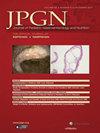严重神经损伤儿童家庭肠外营养的特点和结果。
IF 2.4
3区 医学
Q3 GASTROENTEROLOGY & HEPATOLOGY
引用次数: 0
摘要
目的描述2010年至2023年期间患有严重神经损伤(SNI)和非原发性消化系统疾病的儿童使用家庭肠外营养(HPN)的特征、长期趋势和结果,并将结果与患有原发性消化系统疾病的儿童使用HPN的结果进行比较。方法回顾性分析一家三级儿科医院2010年1月至2023年9月期间使用HPN的所有患有严重神经损伤(SNI)和非原发性消化系统疾病的儿童。我们使用 Mann-Kendall 趋势检验来评估 HPN 启用的趋势。我们比较了开始使用 HPN 之前一年和之后一年的急症护理服务使用情况。结果 在205名HPN患儿中,18名患儿患有SNI和非原发性消化系统疾病,187名患儿患有原发性消化系统疾病。2010 年至 2020 年期间,患有 SNI 和非原发性消化系统疾病的儿童开始使用 HPN 的人数有所增加(p = 0.002)。在患有 SNI 和非原发性消化系统疾病的儿童中,72% 出现了 HPN 相关并发症(管路相关感染/血栓、肾炎、胆石症)。使用 HPN 前一年与使用 HPN 后一年的急症护理使用率没有变化。与原发性消化系统疾病组相比,SNI 和非原发性消化系统疾病患儿实现肠内自主的可能性较低(p < 0.0001);但是,在死亡率方面没有观察到显著差异(22% vs. 8%,p = 0.09)。与使用 HPN 的原发性消化系统疾病患儿相比,SNI 患儿不太可能实现肠内自主。本文章由计算机程序翻译,如有差异,请以英文原文为准。
Characteristics and outcomes of home parenteral nutrition among children with severe neurological impairment.
OBJECTIVES
To describe the characteristics, secular trends, and outcomes of home parenteral nutrition (HPN) use among children with severe neurological impairment (SNI) and non-primary digestive disorders from 2010 to 2023 and compare outcomes to children with primary digestive disorders on HPN.
METHODS
A retrospective review of all children with SNI and non-primary digestive disorders, where HPN was initiated between January 2010 and September 2023 at a tertiary care pediatric hospital. The Mann-Kendall trend test was used to assess trends in HPN initiation. We compared acute care service utilization in the year prior and following HPN initiation. Mortality and ability to achieve enteral autonomy outcomes were compared to those of children with HPN and primary digestive disorders.
RESULTS
Of the 205 included children with HPN, 18 children had SNI and non-primary digestive disorders, 187 children had primary digestive disorders. There was an increase in HPN initiation among children with SNI and non-primary digestive disorders (p = 0.002) between 2010 and 2020. Among children with SNI and non-primary digestive disorders, HPN-related complications (line-associated infection/thrombus, nephrolithiasis, cholelithiasis) occurred in 72%. There was no change in acute care utilization in the year prior versus year following HPN initiation. Compared with the primary digestive disorders group, children with SNI and non-primary digestive disorders were less likely to achieve enteral autonomy (p < 0.0001); however, no significant differences in mortality were observed (22% vs. 8%, p = 0.09).
CONCLUSIONS
HPN is increasingly being used among SNI children with non-primary digestive disorders. Compared to children with primary digestive disorders on HPN, those with SNI are less likely to achieve enteral autonomy.
求助全文
通过发布文献求助,成功后即可免费获取论文全文。
去求助
来源期刊
CiteScore
5.30
自引率
13.80%
发文量
467
审稿时长
3-6 weeks
期刊介绍:
The Journal of Pediatric Gastroenterology and Nutrition (JPGN) provides a forum for original papers and reviews dealing with pediatric gastroenterology and nutrition, including normal and abnormal functions of the alimentary tract and its associated organs, including the salivary glands, pancreas, gallbladder, and liver. Particular emphasis is on development and its relation to infant and childhood nutrition.

 求助内容:
求助内容: 应助结果提醒方式:
应助结果提醒方式:


